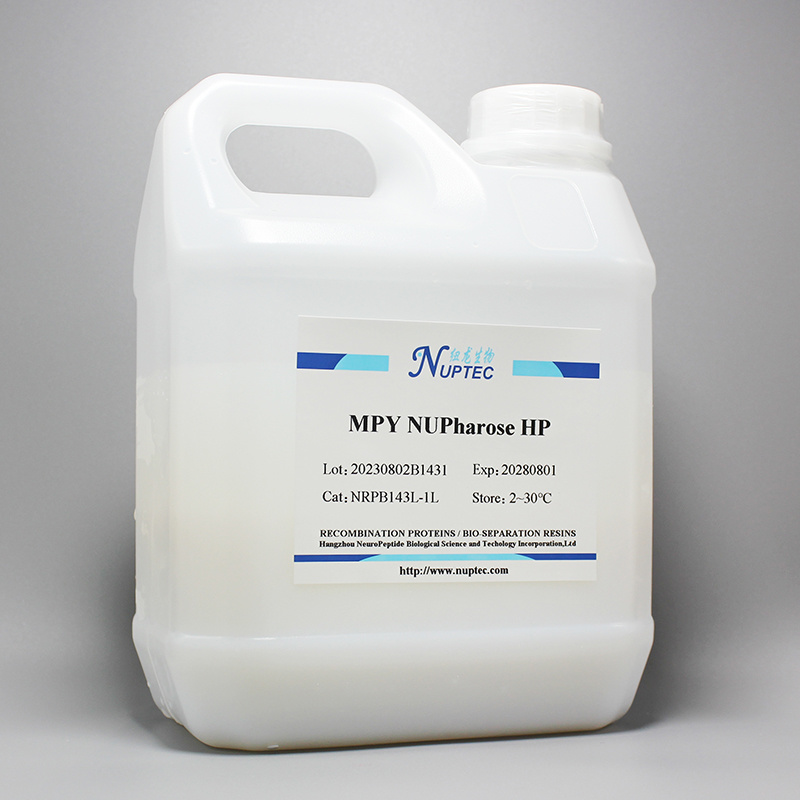
Product Details
Professional Manufaturer of Resins for Protein Purification



Catalog No:
NRPB143L
Product Name:
MPY NUPharose HP
Product features and technical indicators
|
Product Name |
MPY NUPharose HP |
NuPerley MPY |
|
Catalog No. |
NRPB143 |
NRPB142 |
|
matrix |
6% highly cross-linked agarose |
high rigidity agarose |
|
ligand |
2-Mercaptopyridine (MPY) |
2-Mercaptopyridine (MPY) |
|
ligand density |
~3.5mg/mL |
~2.0 mg/mL |
|
Particle size rangea |
20 to 50 μm |
30 to 100 μm |
|
average particle size |
~ 35 μm |
~60 |
|
combining abilityb |
≥35 mg bsa/ml |
≥30 mg bsa/ml |
|
recommend working flow rate |
60~150 cm/h |
60~300 |
|
Maximum flow ratec |
300 cm/h |
1500 cm/h |
|
pH stability |
3~12 (working pH), 3~12 (long-term stability);2~14 (short-term stability) |
|
|
chemical stability |
It is stable in the following solutions: commonly used aqueous buffer, 1 mol/L sodium hydroxide, 8 mol/L urea, 6 mol/L guanidine hydrochloride, 70% ethanol, etc. |
|
|
Storage and transportation |
20% ethanol, 2~30 ℃ |
|
Key words:
MPY NUPharose HP
Classification:
Related Products







